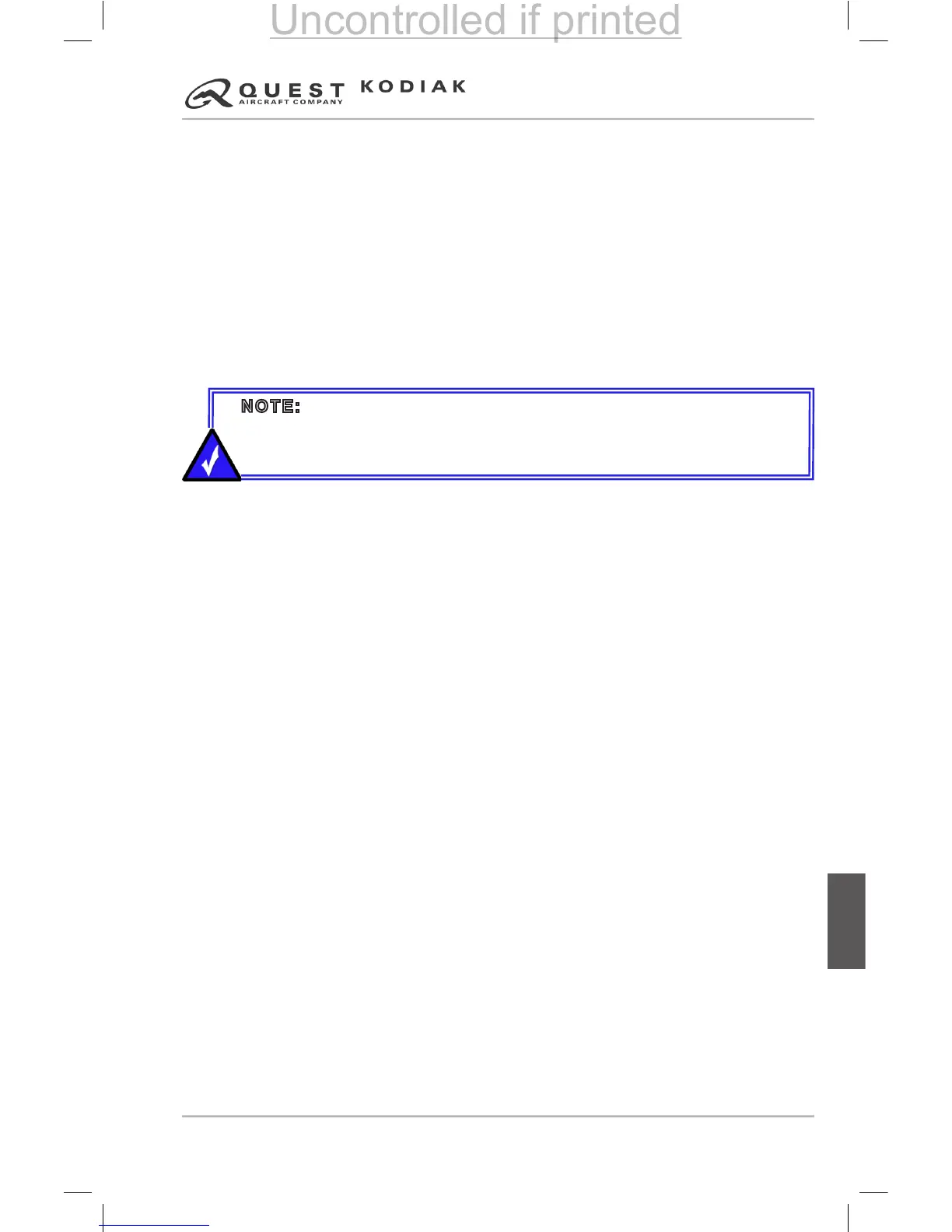7-17 BRAKE SYSTEM
The airplane is equipped with single disc, hydraulically-actuated brakes on
each main landing gear wheel. Each brake is connected, via a hydraulic line,
to a master cylinder attached to each of the pilot’s rudder pedals. Since the
rudder pedals are interconnected, the brakes may be operated by applying
pressure to the upper portion of either the pilot or front passenger rudder
pedals. When the airplane is parked, the parking brake may be set by
applying brake pressure and pulling the parking brake handle aft. The parking
brake handle is installed on the lower portion of the instrument panel, in front
of the pilot seat, just below the control wheel. A parking brake release button
is located on the face of the parking brake handle. To release the parking
brake, press and hold the release button in and push the handle forward
completely.
The brake system should be maintained properly to ensure maximum brake
life. The KODIAK is equipped with metallic brake linings which have different
brake maintenance techniques from brakes with organic linings. When
conditions permit, hard application of the brakes is benecial in that the
resulting higher brake temperatures tend to maintain the proper brake glazing
and will actually prolong the life expectancy of the brakes. Conversely,
consistent light and conservative brake application is detrimental to the
metallic-type brakes.
Some of the symptoms of impending brake failure are: a gradual decrease in
braking action when applying brake pressure, noisy or dragging brakes, a soft
or spongy feel to the brake pedals, and excessive travel with weak braking
action. If any of these conditions exist, the brake system needs immediate
servicing. If braking action decreases during taxi or landing rollout, release
pressure on the brake pedals and then re-apply the brakes with heavy
pressure. If the brakes become spongy or pedal travel increases, pumping
the brakes should build up brake pressure. If one brake becomes weak or
fails completely, use light brake pressure on the effective brake while applying
opposite rudder as required, to offset the turning tendency produced by the
good brake.
7-18 ELECTRICAL SYSTEM
The KODIAK is equipped with a 28-volt direct-current electrical system. The
system utilizes two 24 volt valve-regulated lead-acid batteries mounted on
the left and right sides of the lower, forward portion of the rewall. A 300-
amp engine-driven starter/generator and a 40-amp alternator are used to
maintain the state of charge of the batteries. Power is supplied to electrical
circuits through two main buses, an avionics bus, an essential bus, and an
auxiliary bus. The two main buses and essential bus are on any time the
battery master switch is turned on. All buses are energized when the battery
master switch, avionics switch, and auxiliary bus switches are turned on. The
auxiliary bus is provided for ease of load shedding should an electrical power
failure occur.
NOTE: A brake uid reservoir is installed on the forward left side of the
rewall and provides additional brake uid for the brake master cylinders.
The uid contained in the clear acrylic reservoir should be checked for
proper level prior to each ight.

